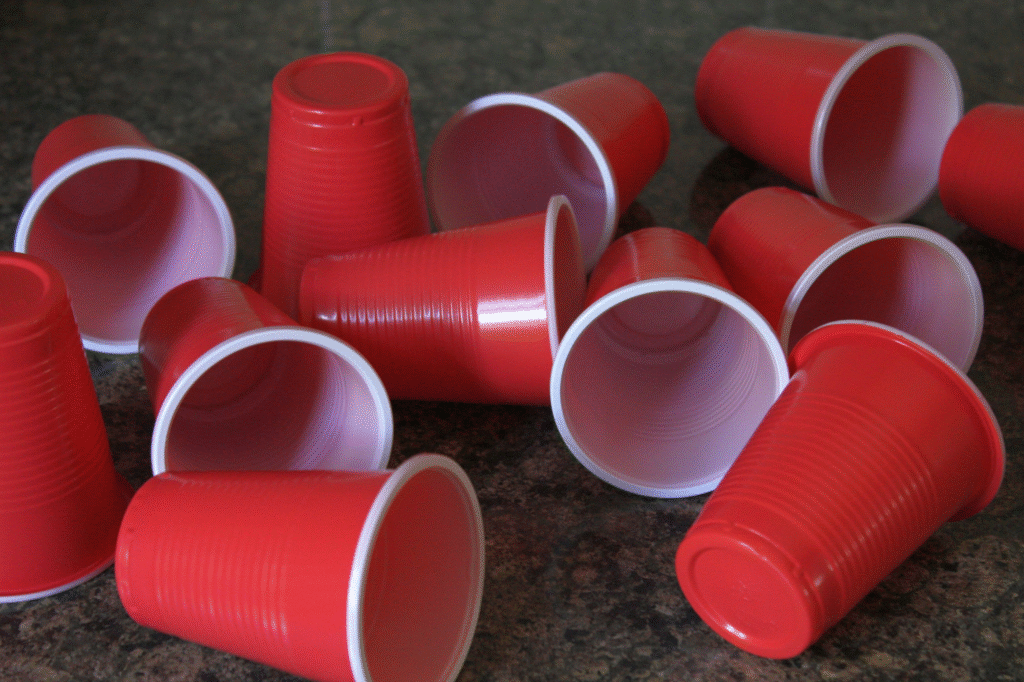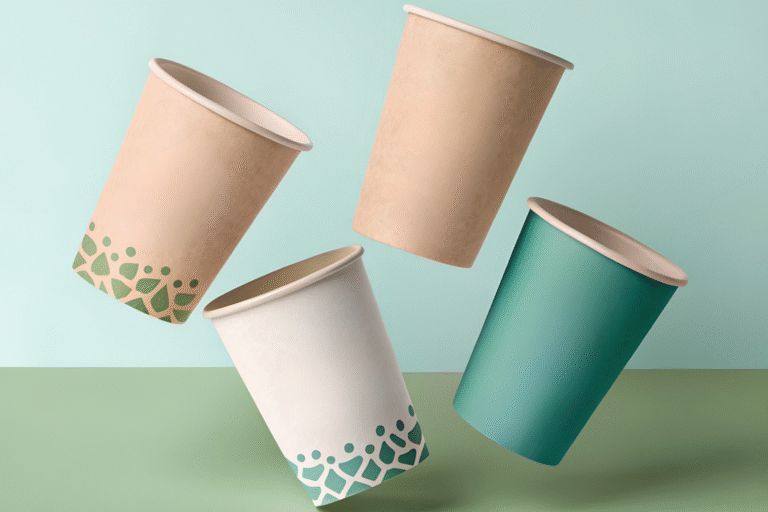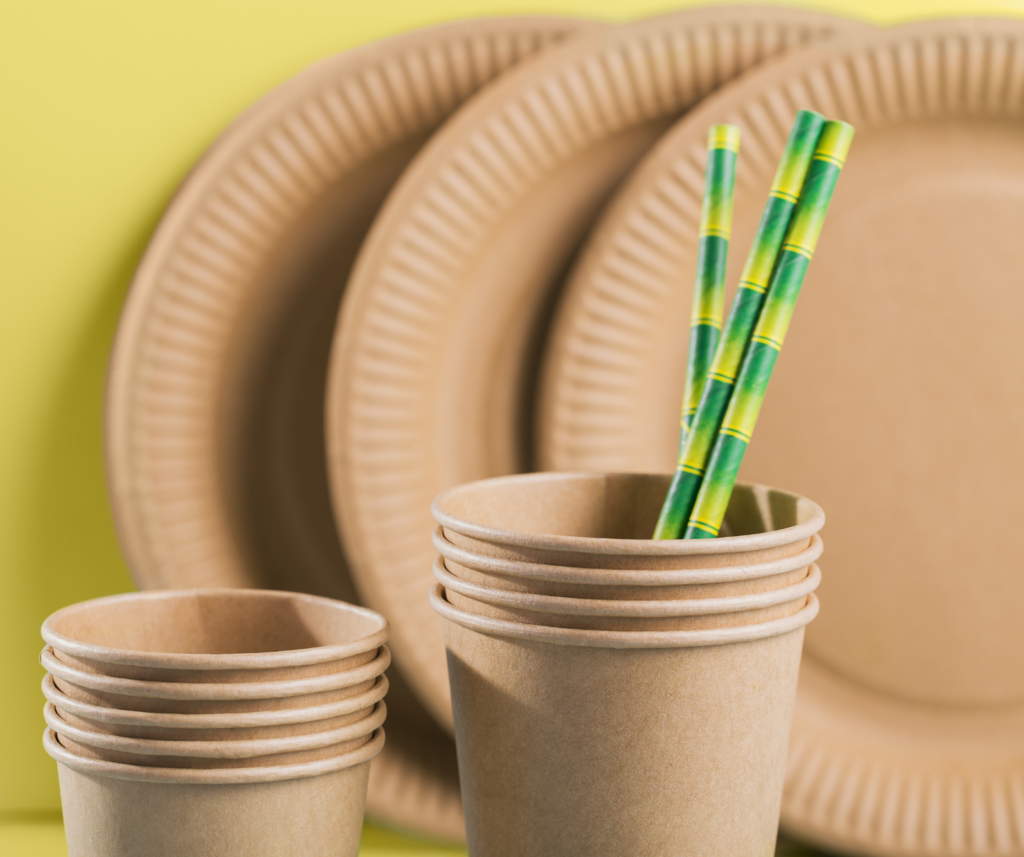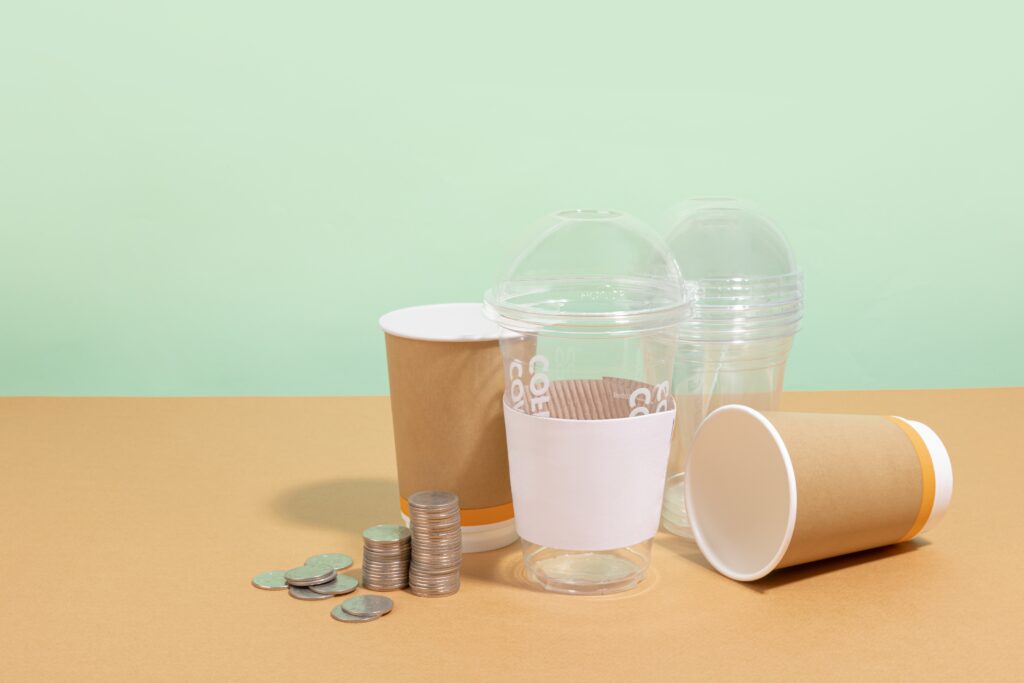It is not a secret that disposable cups are everywhere, from cafés and offices to parties and large events. Yet choosing between paper and plastic cups isn’t as simple as it might seem. Both have different strengths and drawbacks when it comes to practicality, cost, and environmental impact. Paper cups are often seen as the eco-friendlier choice.
Plastic cups, meanwhile, can be durable and cost-effective but contribute significantly to waste if not properly disposed of. This article looks at the facts behind both types of cups, giving you the information you need to decide which option works best for your needs.
Whether you’re serving customers in a business or simply making choices at home, at Hello Straw, we believe in helping you understand the pros and cons to help you make decisions that fit your values.
Understanding Disposable Paper Cups: Purpose and Common Uses
Disposable paper cups exist for one main reason: convenience. They save time and reduce the hassle of washing up, making them popular in both personal and commercial settings.
Paper cups are a go-to choice for hot drinks like coffee or tea because they’re comfortable to hold and help keep beverages warm without burning your fingers. Plastic cups are often picked for cold drinks and alcohol at events, picnics, and fast-food outlets because they’re lightweight, sturdy, and let customers see the drink inside.
In business settings, paper cups also serve as a subtle form of marketing, since logos and designs can be printed on them to strengthen a brand’s presence. However, this convenience brings challenges, particularly in terms of waste and recycling. Many people are starting to question whether single-use products fit with modern views on sustainability and environmental responsibility.
The Evolution of Disposable Cups: A Brief History
The story of disposable cups began in the early 20th century, driven by growing public health concerns that made shared drinking vessels increasingly unpopular. In 1907, the first paper cup was introduced to help prevent the spread of illness, quickly becoming a practical solution in public places such as railway stations, hospitals, and schools. By the 1950s, plastic cups entered the scene, offering greater durability, lower production costs, and a sleek, modern aesthetic. Both paper and plastic cups were soon embraced by businesses, especially in the hospitality sector, due to the convenience they provided for both customers and staff.
Over time, disposable plastic cups became embedded in daily life, often viewed as symbols of modernity and efficiency. However, their environmental impact has faced growing criticism, prompting a shift in both consumer preferences and business practices. With increasing awareness of sustainability, there is now mounting pressure to favour alternatives like paper cups, which offer similar convenience without the long-term environmental harm. The evolution of disposable cups reflects how shifts in public values, health concerns, and environmental priorities continue to shape the way we consume.
Reasons People Choose Disposable Paper Cups
Disposable paper cups and tableware remain popular for several practical and environmental reasons. They offer a convenient solution across many settings, while also helping businesses align with consumers’ sustainability expectations. Key reasons include:

- Convenience: Ideal for situations where washing up is impractical, such as parties, events, or busy cafés. Paper cups save time and effort for both individuals and businesses.
- Heat Insulation: Well-suited for serving hot drinks like coffee or tea. Paper cups help retain heat while keeping the cup comfortable to hold, reducing the risk of spills or burns.
- Efficiency in Service: In hospitality and office environments, paper cups help maintain fast service and minimise the space and costs associated with washing reusable alternatives.
- Environmental Considerations: Many businesses and consumers are increasingly choosing paper cups over plastic to reduce environmental impact, support renewable materials, and meet sustainability goals.
- Brand Perception: Using paper cups can enhance a brand’s image by signalling commitment to eco-friendly practices, which resonates strongly with today’s environmentally conscious customers.

While no disposable product is completely without impact, paper cups provide a practical balance between convenience and growing environmental responsibility.
Reasons People Choose Disposable Paper Cups
Plastic cups remain a familiar choice in many settings, valued for practicality, low cost, and design flexibility. They’re known for being easy to use, strong enough for everyday demands, and available in several colours and styles. Yet behind these advantages lie concerns about waste and sustainability, which are worth exploring in detail across features like convenience, durability, aesthetic appeal, price, compostable options, and reusable alternatives.

Convenience and Ease of Use
Plastic cups are lightweight and stack neatly, making storage and transport simple for both personal use and businesses. They’re easy to handle, helping staff serve customers quickly, especially in busy environments. However, their single-use nature means they often end up in bins after one drink, contributing to waste and environmental concerns.
Practical Strength and Durability
Plastic cups are valued for their sturdy construction, which helps prevent leaks or breakage during use. They’re a practical choice for cold and alcoholic drinks, especially in busy settings like outdoor events or fast-food outlets. Still, the durability that makes them useful also means they don’t degrade quickly, remaining in landfills for many years
Features and Benefits of Paper Cups

Paper cups are widely used for both hot and cold drinks, offering practical advantages and growing appeal for businesses and consumers looking for sustainable solutions. While not without challenges, they bring benefits in insulation, recycling potential, and perceptions of environmental responsibility, which deserve closer examination across key features.
Availability of Recycled and Recyclable Paper Options
Paper cups are increasingly made from recycled or responsibly sourced materials, with some designs reducing or removing plastic linings to improve recyclability. These innovations appeal to businesses aiming to cut their environmental impact and attract eco-conscious customers.
Recycling challenges remain, as facilities vary by region, but using recyclable cups still signals a commitment to sustainability—especially when clear disposal guidance is provided.
Environmental Perception and Long-Term Sustainability Benefits
Paper cups often enjoy a stronger environmental reputation than plastic, as they come from renewable resources and are seen as more biodegradable. This perception appeals to eco-conscious customers and supports sustainability-focused branding. Advances in sourcing and recycling have also made paper cups a more viable green option.
Many businesses adopt paper cups to meet consumer expectations and sustainability targets, though it’s important to recognise they still carry an environmental impact. Issues like transport emissions, water use, and recycling challenges remain. Even so, paper cups are widely seen as a step in the right direction for single-use packaging.
How Paper and Plastic Cups Are Made and Their Environmental Costs
Cup production has a great environmental impact. Paper cups come from renewable resources like trees and are increasingly made using sustainable forestry and cleaner processes. Though energy and water are used, modern methods have reduced their footprint.
Plastic cups, made from fossil fuels, involve more carbon-intensive production and create long-lasting waste. While neither option is perfect, paper cups are widely seen as the more responsible choice for those seeking practical yet eco-friendly solutions.
Potential Health Risks of Plastic Cups
Plastic cups have long been used for cold drinks, but concerns remain about potential chemical migration, such as BPA or microplastics. Even BPA-free plastics may contain other additives with unclear long-term effects.
Paper cups are generally seen as safer, often made with food-safe coatings and inks. Newer designs reduce plastic linings, reinforcing a brand’s health- and eco-conscious image while appealing to environmentally aware customers.
Challenges of Recycling Paper and Plastic Cups
Recycling disposable cups isn’t always straightforward, but paper cups show more promise. Though some still need specialist facilities, improved designs now allow easier recycling as standard paper waste.
Plastic cups, while recyclable in theory, often end up in landfill due to contamination or limited processing options. Paper cups, made from renewable materials and quicker to break down, are increasingly seen as the more responsible choice for reducing waste.
Life Cycle Assessments: Comparing Paper and Plastic Cups
Understanding the true environmental impact of disposable cups requires looking beyond just how they’re used. Life cycle assessments (LCAs) analyses every stage, from raw material extraction to manufacturing, transport, use, and disposal. Such studies have revealed important differences between paper and plastic cups, helping businesses and consumers make informed choices.
Research shows that paper cups, although requiring more water and energy during production, originate from renewable resources and offer better options for recycling and composting. Plastic cups typically have lower production energy requirements, but rely on fossil fuels, which raises concerns about carbon emissions and long-term waste.
Data often highlights key trade-offs:
Water use
Carbon emissions
Waste impact
Despite their higher initial footprint, paper cups increasingly emerge as the environmentally preferable choice in most analyses.
How Paper Cups Compare to Styrofoam Cups

Paper cups are widely seen as a more responsible alternative to Styrofoam, which is hard to recycle and contributes significantly to landfill and marine pollution. Many regions are now phasing out Styrofoam due to its environmental impact.
While paper cups require more resources to produce, they are increasingly recyclable and compostable, making them a better fit for sustainability goals. As a result, paper is fast replacing Styrofoam as the preferred, eco-friendly option.
Expert Opinions on Paper vs. Plastic Cups
Many experts today lean towards paper cups as a more sustainable choice over plastic. While acknowledging that paper manufacturing involves higher resource use, they highlight that paper decomposes far more quickly and offers growing options for recycling and composting. Plastic cups, in contrast, persist in the environment for decades, adding to global waste challenges.
Environmental specialists increasingly favour renewable, biodegradable materials, pointing to paper’s lower long-term impact and better fit with circular economy principles. Although no option is entirely perfect, expert opinion often suggests paper cups are the more responsible path, especially given rising consumer demand for greener products.

Conclusion: Paper Cups vs. Plastic Cups - Is There a Clear Winner?
Although neither paper nor plastic cups are flawless, paper cups stand out as the stronger choice for businesses and consumers seeking sustainability. Paper offers biodegradability, expanding recycling possibilities, and a positive public image aligned with eco-friendly values.
While it’s true that paper production consumes notable resources, its impact is generally considered less harmful than the persistent pollution caused by plastic waste. Regulations and shifting consumer expectations increasingly favour paper as the safer, more future-proof option. In the debate between paper and plastic, paper cups emerge as the clearer winner for those committed to reducing environmental footprints and supporting sustainable practices.




